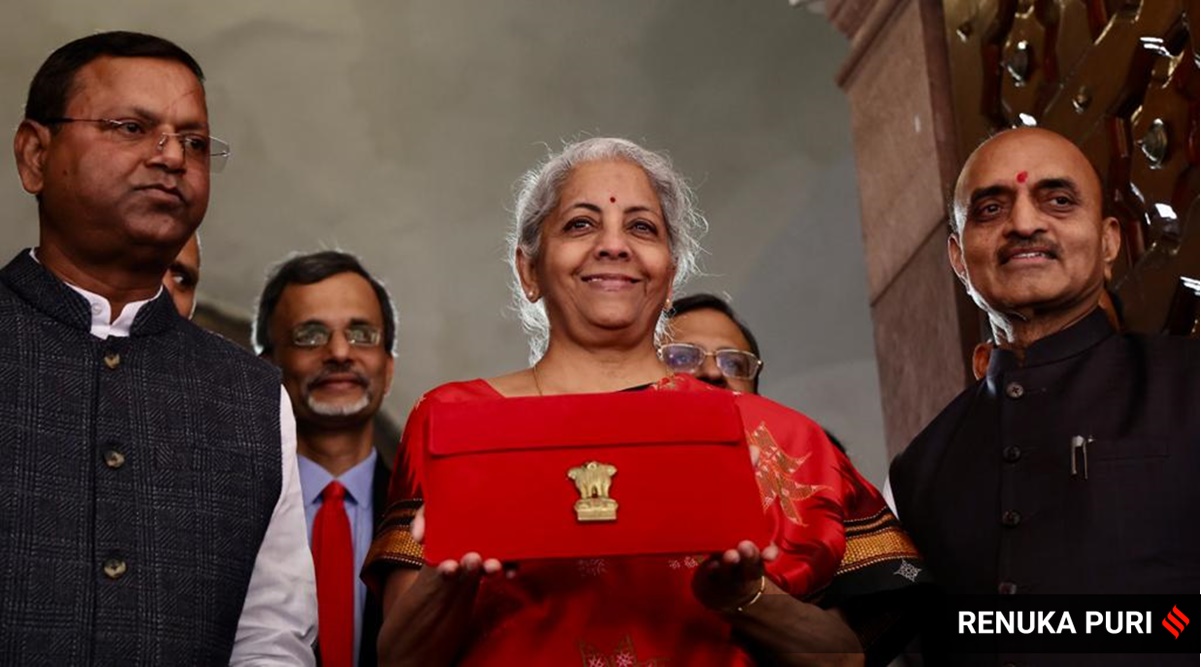There is no populism in Union Budget for 2023-24, Finance Minister Nirmala Sitharaman’s fifth in a row, no foreshadow of the 2024 Lok Sabha elections – or its imperatives for a party working for a third term. If at all, this Budget clearly points to continuity to the government’s economic strategy. It is bold, and innovative too with the hope that good economics isn’t necessarily bad politics.
The big picture of the Budget is its focus on growth through higher productive capital spending, and simultaneously sticking to fiscal prudence, which in the near to medium term will mean lower interest rates for the private sector, encouraging them to invest.
 Also in Express Opinion | Sajjid Z Chinoy writes: Budget 2023 pulls off an artful balance
Also in Express Opinion | Sajjid Z Chinoy writes: Budget 2023 pulls off an artful balance
Clearly, the emphasis is on capital investment, and the acknowledgement in North Block that the government must continue to be a player in spending, particularly when the private sector is still shying away from making big investments. In the last three years, capital expenditure has risen continuously – from Rs 4.39 lakh crore in 2020-21 to Rs 5.4 lakh crore in 2021-22 to Rs 7.5 lakh crore in the current financial year (2022-23) to Rs 10 lakh crore in the next financial year. The capital investment outlay for next year is 33 per cent higher than what is estimated for 2022-23.
What is innovative in the Budget is a sharp nudge to taxpayers to move to the new tax regime. By bringing in some relief in terms of standard deduction to those opting for the new tax regime, she has incentivized individuals in the middle-income category. Further, she has raised the tax threshold to Rs 7 lakh a year from Rs 5 lakh a year. This will again prod those in the lower tax bracket to switch. Further, lowering of the surcharge on the super-rich (those earning Rs 5 crore or more a year) such that the effective tax rate is lowered from 42.7 per cent to 39 per cent, will immediately incentivise the super-rich to shift to the new tax regime.
Most Read 1Chandrayaan-3 mission: Dawn breaks on Moon, all eyes on lander, rover to wake up 2As Indo-Canadian relations sour, anxiety grips Indian students, residents who wish to settle in Canada 3Karan Johar says Sanjay Leela Bhansali did not call him after Rocky Aur Rani: ‘He’s never called me but…’ 4Gadar 2 box office collection day 40: Hit by Shah Rukh Khan’s Jawan onslaught, Sunny Deol movie ends BO run with Rs 45 lakh earning 5Shubh’s tour in India cancelled: Why is the Canada-based singer facing the music?
The Budget, as most who have watched the Narendra Modi government closely over the last nine years, hasn’t strayed away from the path of fiscal consolidation. The NDA-II government doesn’t splurge – at least doesn’t feel the need to spend more on populist schemes – to win elections. The one number that matters most in the Budget and is keenly watched by all FIIs and foreign investors is the fiscal deficit – the excess of expenditure over receipts. Sitharaman has not stuck to the target this year at 6.4 per cent of the GDP, she has also estimated it at 5.9 per cent for 2023-24 (less than 6 per cent; a reduction of 0.5 percentage points from 2022-23’s deficit estimate). When the government borrows less, the interest rates are lower. This will encourage the private sector to borrow – since costs will be lower, and as is said in economic terms, crowds in the private sector.
The government may or may not have thought about this. But it is apparent given the country’s demography that the Budget is catering effectively to the aspirations of the younger generation and the needs of the senior citizens. By exempting income up to Rs 7 lakh from tax, Sitharaman has put more money in the hands of many new (read young) entrants to the job market. Now, those earning up to Rs 7 lakh (monthly income of just under Rs 60,000) will not pay any tax. Also, those who have retired – government employees and even private sector – which is an increasing number today, will not have to pay tax if their pension is less than Rs 60,000.
Union Budget 2023: All you need to know
Also ReadWill reservation really help Indian women?Pratap Bhanu Mehta writes on new Parliament: India’s age of ambitionValues Kota imparted: Anxiety and building a future on a butchered presentWith G20-IMEC plan, the global order shifts to Eurasia↗️ Finance Minister Nirmala Sitharaman’s Union Budget 2023 has some big takeaways↗️ First, what everyone has been looking forward to: changes in the new income tax regime. She has made the new tax regime more attractive. There are changes in the rebate limit and in tax slabs. What does this mean for the taxpayer?↗️ FM Sitharaman proposed a 33% increase in capital investment outlay, raising it to Rs 10 lakh crore. This is the biggest in the past decade. What does it mean?↗️ Some articles get cheaper and others get costlier due to changes in customs duty. Here is a list↗️ The capital outlay for the railways has been increased to the highest ever – Rs 2.40 lakh crore. The government is trying to create more jobs↗️ FM Sitharaman said the fiscal deficit will fall to 5.9% of the GDP. What does it mean for the stakeholders?↗️ The FM called it the ‘first Budget of Amrit Kaal’. PM Narendra Modi said it will build a strong foundation for a developed India. What did opposition leaders say?


